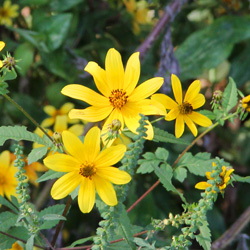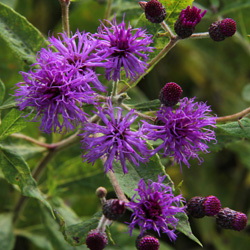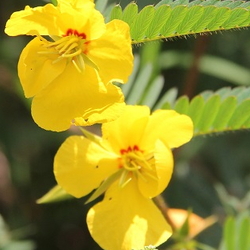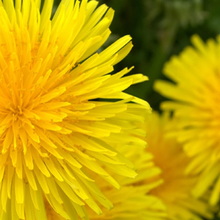Many people take tiny wildflowers for granted but they are some of my most cherished plants. I have a yard, not a lawn and am quite proud of that. My yard has a healthy population of honeybees and other pollinators and sometimes these insignificant little plants are overlooked by humans as a nectar source. My little corner of the world consists of about 5 acres and I try to keep it as unspoiled as possible without upsetting my neighbors. That's why I maintain a yard of tiny wildflowers.
When you have a mono-culture of just one plant (lawn grass, in this instance) you stand a good chance of harming your local environment. People in perfectly manicured suburbs rarely see bees, butterflies and other insects. The reason for this is that these creatures need specific plants to survive and procreate. Butterflies don't lay their eggs where ever they get the urge. They need specific species of plants for their caterpillars to use as food. Without that plant, the caterpillars will die and without caterpillars, you have no butterflies. Bees need nectar and pollen and many commercially available plants seem to lack those elements. There are even some species of bees that prefer to use only one genus of plants for nectaring. There is even a specific word for an insect that does this. Oligolecty is a pollination term where an insect displays this very narrow preference. It appears that plant breeders found ways to breed for bigger and longer-lasting flowers, but the life-giving sustenance the pollen and nectar provide often does not transfer to the new and 'improved' plant. That's why it is so important to be aware of the wildflowers in your surroundings. They may look a bit weedier than their cultured counterparts, but they play a huge part in the survival of many species.
Venus' looking glass (Triodanis perfoliata) is a tiny, summer-blooming wildflower with the color of amethysts. The blossoms are hardly larger than a fingernail and if you aren't paying attention, you'll miss them. They hide tucked in among the clover and chickweed are hard to spot. They are members of the Campanulaceae or bellflower family and you can see the resemblance to its more cultured cousins in its star-like appearance and jewel toned color.
This little North American native is most often found in dry shade along the edges of woods and rocky outcrops. It is an annual that is happy in disturbed soil from Canada to Mexico, but is most common in the lower 48 states. I find it around the foundation of my house where the weed-eater doesn't reach and sometimes along the driveway. It barely reaches 3 or 4 inches in those places, but I've seen it over a foot tall at the edge of my neighbor's woods. The flowers are produced one and two at a time along the stalk and the blooms open higher as the stems grow tall. It isn't particular about moisture though and will settle in and be content in a wetland setting if there is sufficient drainage and it doesn't constantly have wet feet. It is a very adaptable and tough plant that inconspicuously settles in to corners of abandoned lots, agricultural fields and disturbed construction sites. It is never present in enough numbers to be a hindrance to farmers.
Its common name, Venus' looking glass probably stems from a similar European plant that grows a bit larger. The seeds are quite shiny and have a mirror-like appearance. The North American version has such small seeds that no one could ever be accused of seeing their reflection in them, but the settlers saw the similarities, so the name stuck. There are quite a few plants indigenous to this continent that have European counterparts and often travelers to the New World kept the names. It was probably their way of hanging on to familiar things.
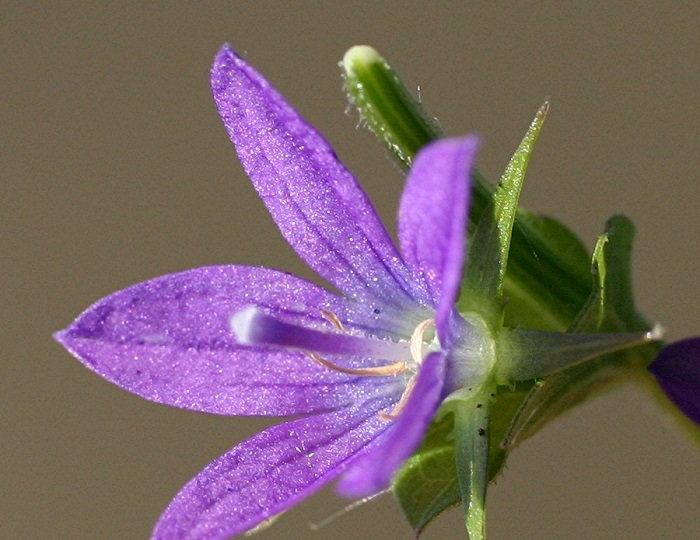
Native Americans knew of the plant and it was part of their herbal pharmacy. A tea made from the roots was used to treat heartburn and other digestive upsets. The dried herb was smoked ceremoniously as well, however I could find no evidence of psychotropic properties. Apparently, they just liked the taste. I couldn't find any evidence of its use as a natural dye or an edible food source either.
Triodanis perfoliata makes a nice addition to a cottage garden, especially when planted in clumps or drifts and since it reseeds easily, you should always have some to enjoy. They don't mind if you shear them back to make a less leggy appearance since my lawnmower does just that. I've found them happily blooming well out into my yard only a few inches tall. Many wildflower sources have seeds available as part of a mix or individual packets. Just scatter the seeds in a spot with dappled shade where you've prepared the soil and they will reward you with their enchanting flowers .


